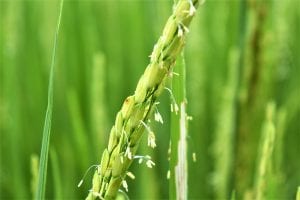For years, scientists have been trying to find ways to avoid the imminent world food shortage crisis. Is there a scientific breakthrough that could help the world get more grain yield in plants and help avoid a worldwide food shortage? These are questions that farmers and scientists around the world have been trying to find the solution to for decades. Professor Xin-Xiang Peng, of South China Agricultural University, and his team believe that they have found the answer, a process they call the GOC Bypass method.
Professor Xin-Xiang Peng and his team conducted thorough research on rice plants, specifically, and tried to find a way to further maximize their grain yields. Peng and his team believe that with the growing population of the world and less useable cultivatable soil, scientists must find a way to maximize grain yield, in order to produce more food. After intensive research, Peng and his partner, Zheng-Hui He, believe that they have found a way to partially bypass a process called photorespiration and reuse the materials used in photorespiration in photosynthesis. This process is called GOC Bypass. Xiang and his team bioengineered the CO2 to be diverted from photorespiration and to instead be used during photosynthesis, causing increased grain yield.
Peng and He discovered that bioengineered rice plants have a 27% greater grain yield than normal rice plants. To achieve this, they converted a molecule called glycolate, which is a product of photorespiration, and converted it to CO2, using three rice enzymes: glycolate oxidase, oxalate oxidase, and catalase (AKA GOC). The CO2 was then diverted to photosynthesis, which was able to, in turn, create a higher grain yield as the photorespiration in the rice plants went down by approximately 25% and the net photosynthetic rate increased by about 15%, due to the higher concentrations of CO2 being able to be used for photosynthesis. Thus, increasing the grain yield in rice plants and harvesting more food from the same crop.
Biologically engineering food has been around for most of the 2000’s, but the GOC Bypass method is a new method that could potentially help combat the need for more food, due to the population growth and the decrease of cultivatable land. Peng and He’s research is promising, but it is still in its early stage. So, only time will tell if the GOC Bypass method will be of any use to mankind in the future and if this process can be used with a variety of different crops.
What do you think? Could the GOC Bypass method help solve the worlds emerging food crisis? Only time will tell.
The research is from Zheng-Hui He, Xin-Xiang Peng’s Engineering a New Chloroplastic Photorespiratory Bypass to Increase Photosynthetic Efficiency and Productivity in Rice, at the South China Agricultural University. The research was published by the Molecular Plant Shanghai Editorial Office in association with Cell Press, an imprint of Elsevier Inc., on behalf of CSPB and IPPE, SIBS, CAS.



Leave a Reply